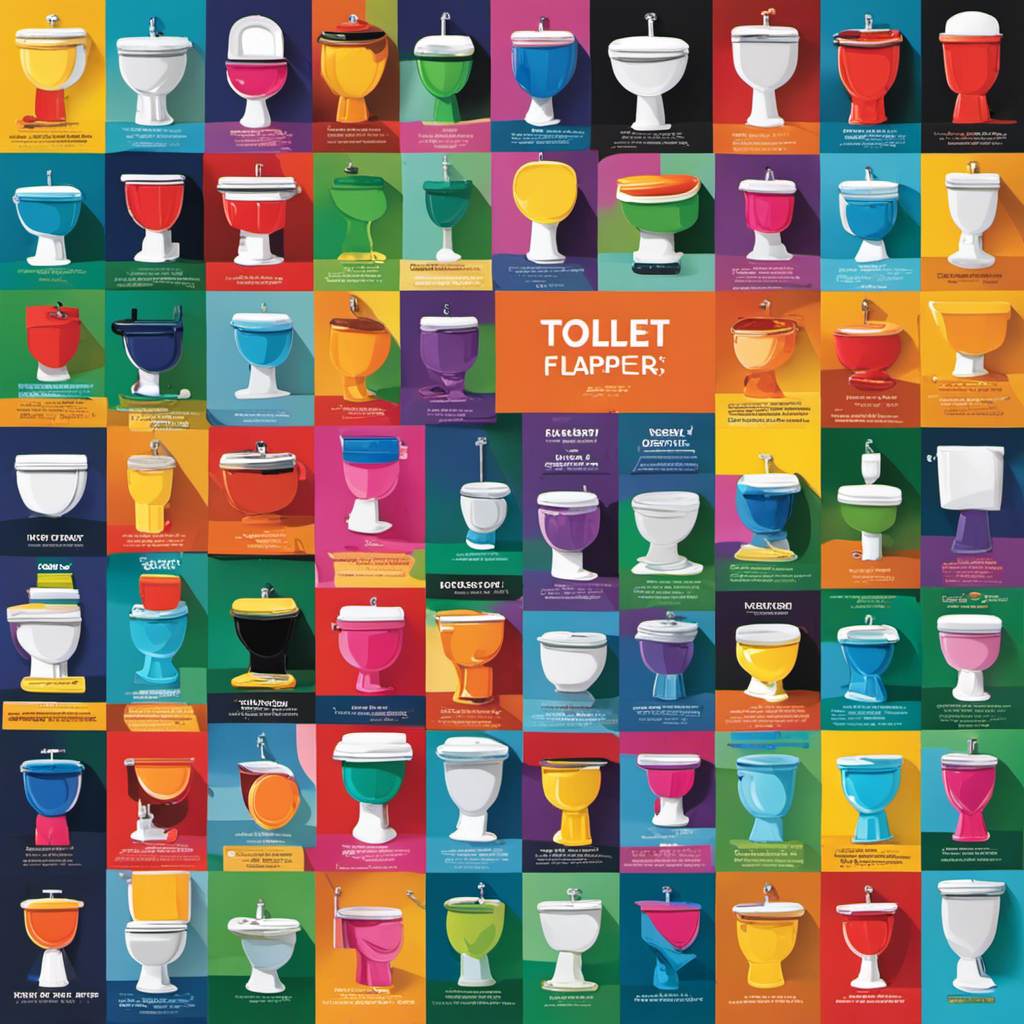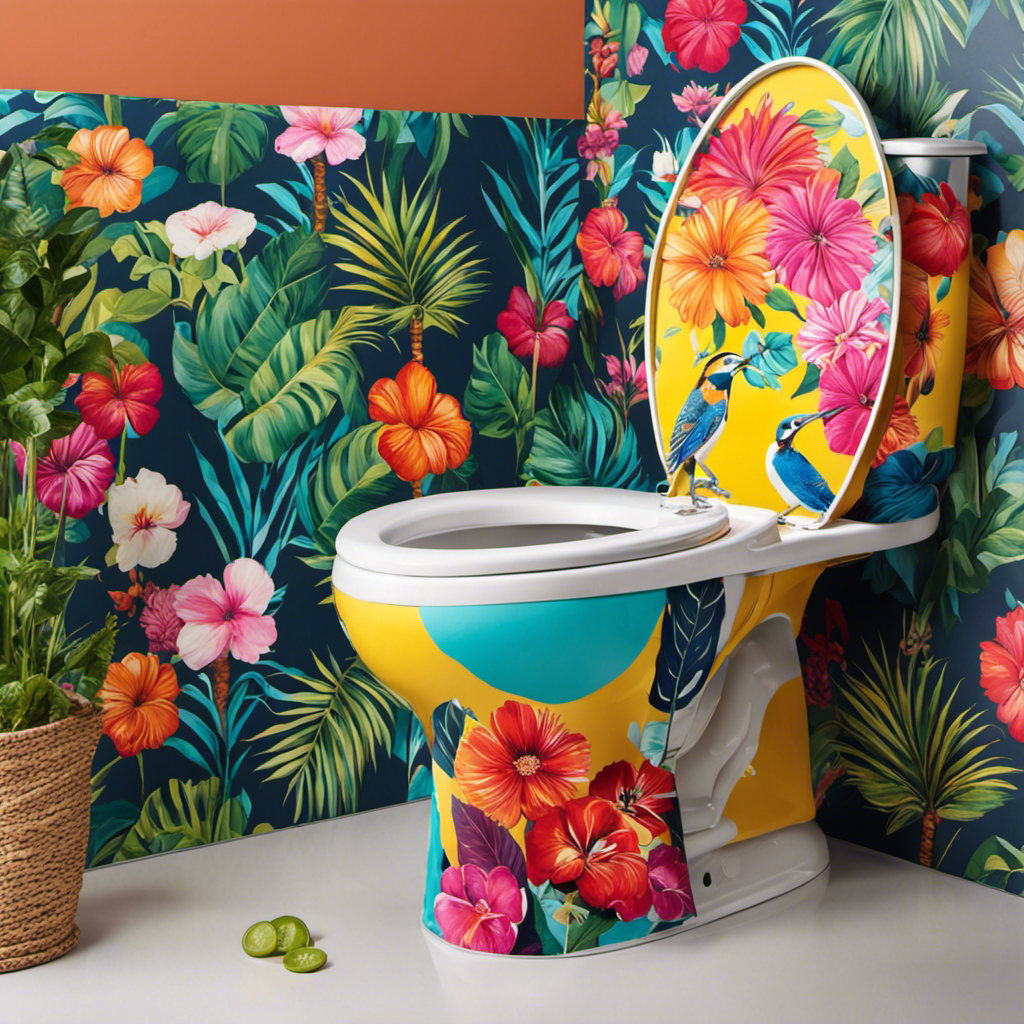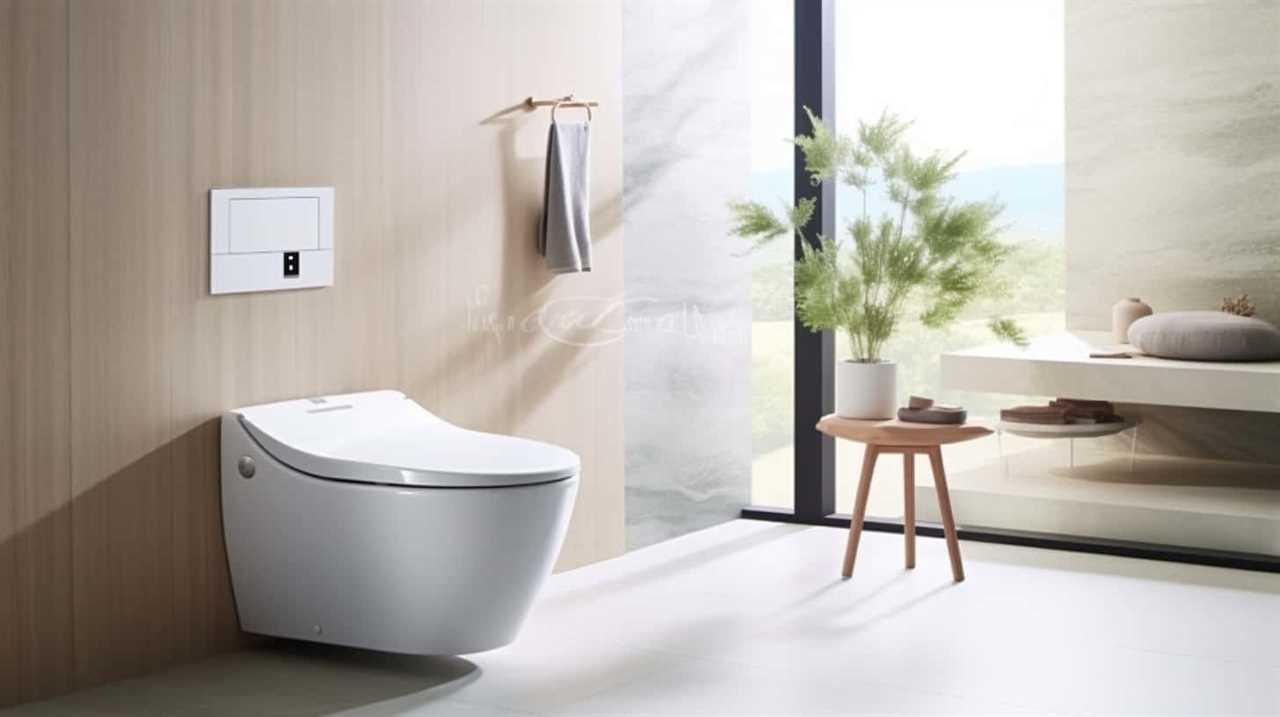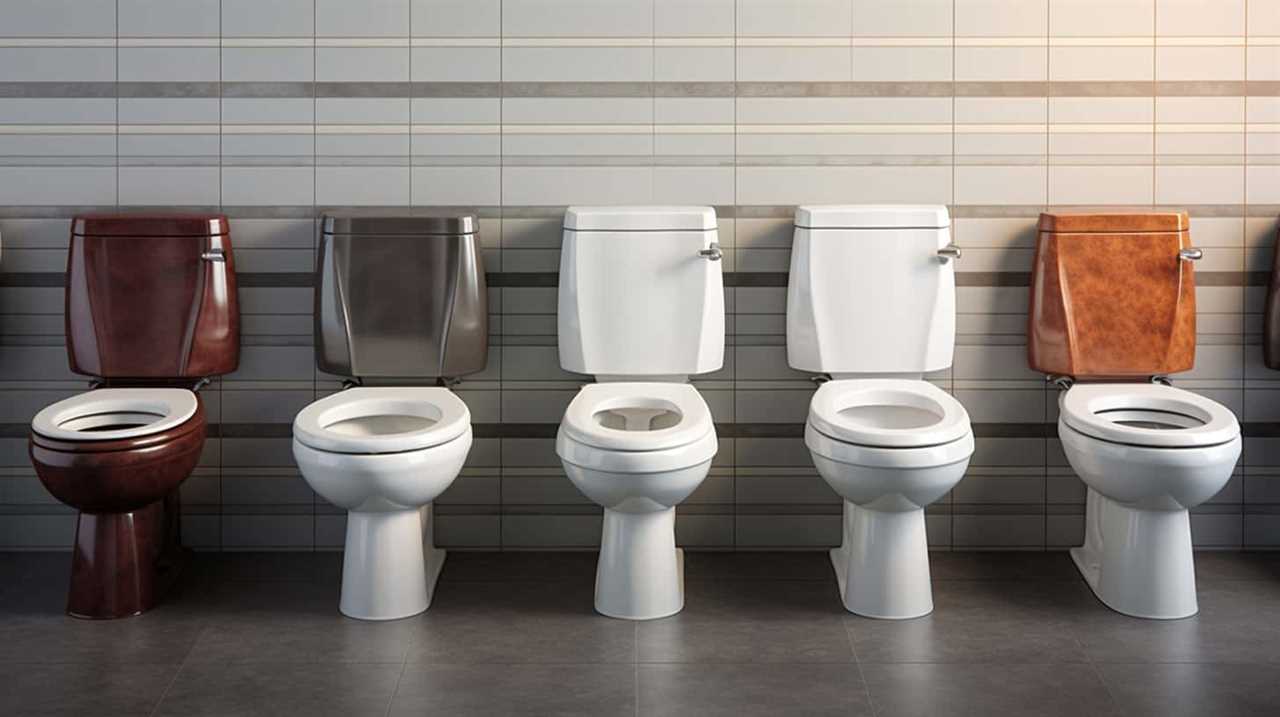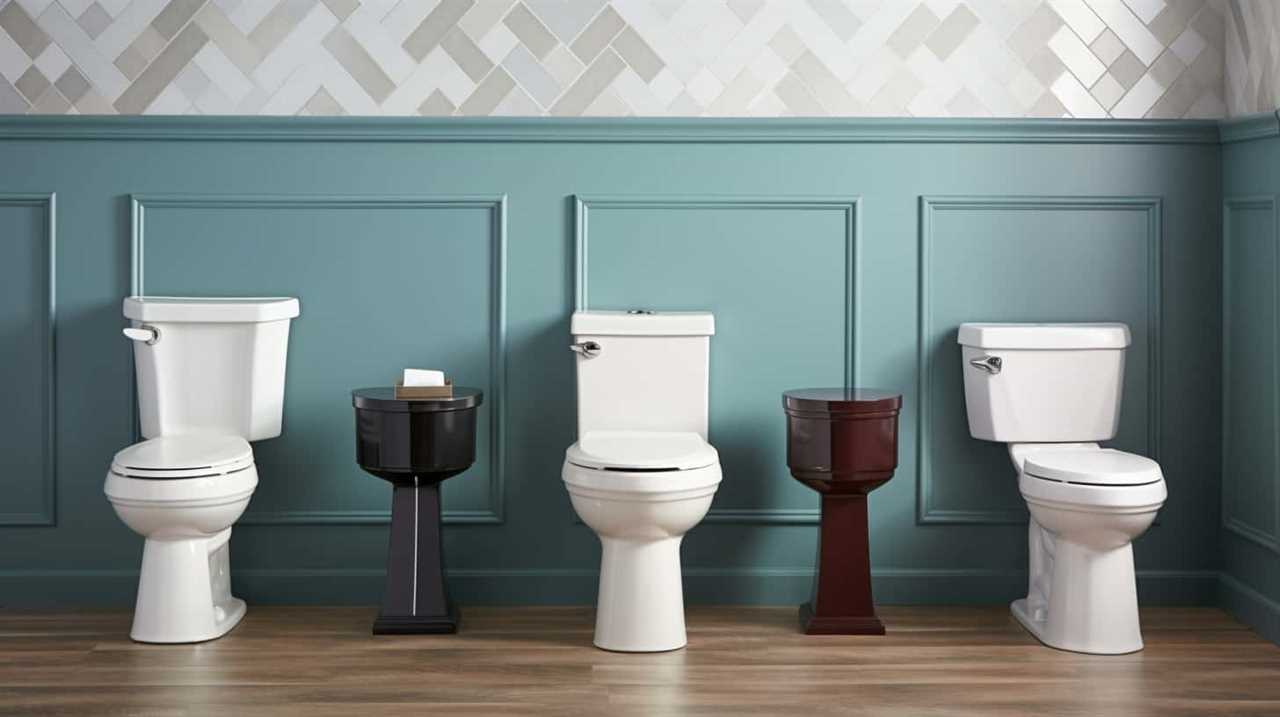As a plumbing expert, I know that understanding toilet flapper types is essential for maintaining a properly functioning toilet.
In this comprehensive guide, I will explain how different flappers work and why they sometimes fail.
Rubber flappers with a floater or control dial are popular for their water-saving capabilities. However, older models like seat disk flappers and tank ball flappers are still in use.
By knowing the signs of a damaged flapper and choosing the right one for your toilet, you can prevent issues like continuous running, weak flushes, and water leaks.
Let’s dive in!
Key Takeaways
- Rubber flappers are the most popular choice for toilet flappers worldwide due to their tight seal, low maintenance requirements, and resistance to damage.
- Rubber flappers with a floater are an eco-friendly choice that allows for water consumption control and savings.
- Seat disk flappers require regular maintenance and have some drawbacks compared to tank ball flappers, which offer better sealing and water flow control.
- Regular maintenance and timely replacements of toilet flappers are important to prevent water leaks and ensure efficient flushing.
Rubber Flappers
I prefer rubber flappers with a floater because they allow me to control the amount of water I consume per flush.
Rubber flappers are the most popular choice for toilet flappers worldwide due to their reliability and durability. These flappers are made from a flexible rubber material that creates a tight seal when the toilet is flushed, preventing water from leaking into the bowl.
One of the key benefits of using rubber flappers is their low maintenance requirements. They are resistant to damage from cleaning chemicals and can withstand the buildup of hard water deposits.
Additionally, rubber flappers with a floater provide the added advantage of water consumption control. By adjusting the floater, you can customize the amount of water used per flush, making them an eco-friendly choice.
Rubber Flappers With Floater
Rubber flappers with a floater have become increasingly popular due to their efficiency and ease of use. They allow precise control over water consumption, leading to water savings. Additionally, these flappers can be easily installed without the need for professional help, making them a convenient option for homeowners. They are also cost-effective, as they are affordable and can help reduce water bills in the long run.
However, there are some cons to consider when using rubber flappers with floaters. Over time, these flappers may deteriorate and require replacement or maintenance. It is also important to ensure that the rubber flapper with a floater is compatible with your toilet model to avoid any compatibility issues. Furthermore, if the flapper is not properly sealed, it can cause water leakage and inefficiency.
Common problems that may arise with rubber flappers with floaters include improper fitting, floaters getting stuck, and wear and tear. Regular inspection and maintenance can help prevent these issues and ensure optimal performance.
Rubber Flappers With Control Dial
Installing a rubber flapper with a control dial allows me to easily adjust the water consumption settings for each flush. This type of flapper offers several advantages and disadvantages. The main advantage is the ability to control the amount of water used per flush, which can help conserve water and reduce utility bills. Additionally, the control dial allows for precise water consumption settings, giving me the flexibility to customize the flush according to my needs. However, there are some common problems with rubber flappers with control dial. Over time, the dial may become loose or difficult to turn, leading to improper water flow control. Additionally, the rubber material can deteriorate with regular use, causing leaks or inefficient flushes. Regular maintenance and inspection are necessary to ensure proper functioning of these flappers.
Below is a table summarizing the advantages, disadvantages, and common problems of rubber flappers with control dial:
| Advantages | Disadvantages | Common Problems |
|---|---|---|
| Easy water consumption adjustment | Potential for dial becoming loose | Improper water flow control |
| Precise settings for each flush | Deterioration of rubber material | Leaks or inefficient flushes |
| Customizable flush according to needs | Regular maintenance and inspection required |
Seat Disk Flappers
The seat disk flappers are an older model of toilet flappers that connect to the water reservoir. These flappers have been used for many years and have proven to be reliable and effective. However, they do require regular maintenance to ensure optimal performance.
Here are some key maintenance tips for seat disk flappers:
- Inspect the flapper regularly for any signs of wear and tear, such as cracks or deterioration.
- Clean the flapper and seat area to remove any debris or mineral deposits that may affect its sealing ability.
- Adjust the chain length to ensure proper opening and closing of the flapper.
While seat disk flappers have their advantages, such as durability and simplicity, they do have some drawbacks compared to tank ball flappers. Tank ball flappers offer better sealing and control of water flow, making them a preferred choice for modern toilets. Additionally, tank ball flappers are easier to replace and maintain, making them a more convenient option in the long run.
Tank Ball Flappers
I prefer tank ball flappers because they offer better sealing and control of water flow. Tank ball flappers are a type of toilet flapper that opens and closes the outlet drain of the tank. They provide a reliable seal, preventing water from leaking into the bowl when not in use. Additionally, tank ball flappers allow for precise control of water flow, ensuring an efficient and effective flush.
When it comes to replacing tank ball flappers, it’s important to choose a flapper that is compatible with your toilet tank dimensions. Measure the dimensions of your current flapper and select a replacement that matches those measurements.
Common issues with tank ball flappers can include a flapper that doesn’t fully close, causing water to continuously run into the bowl, or a weak flush due to a faulty flapper. Troubleshooting these issues may involve cleaning the flapper to remove any debris or mineral deposits, adjusting the chain length to ensure proper closure, or replacing the flapper altogether if it is damaged or worn out.
Toilet Flapper Types:
| Flapper Type | Description |
|---|---|
| Rubber Flappers | Most popular worldwide, with options for water control |
| Seat Disk Flappers | Older models that connect to the water reservoir |
| Tank Ball Flappers | Offers better sealing and control of water flow |
Identifying and Measuring Toilet Flappers
When identifying and measuring toilet flappers, it’s important to consider the dimensions of the flapper and choose one that fits the tank properly. To ensure a successful replacement, follow these steps:
-
Measure the diameter of the flapper: Use a tape measure to determine the size of the flapper’s opening. This will help you find a replacement that fits snugly.
-
Measure the chain length: Measure the length of the chain that connects the flapper to the flush handle. It should be long enough to allow the flapper to fully close and seal the tank.
-
Consider the shape and design: Different toilets may require specific types of flappers, such as round or oval-shaped ones. Check the manufacturer’s guidelines or consult a professional if you’re unsure.
Toilet flapper maintenance is crucial for proper function. If you notice any signs of damage or deterioration, it’s time to replace the flapper. Regular maintenance and timely replacements will help prevent water leaks and ensure efficient flushing.
Reasons for Toilet Flapper Failure
Regular maintenance and timely replacements can help prevent toilet flapper failure. Strong cleaning chemicals, hard water deposits, and regular wear and tear can all cause issues.
To ensure the longevity and proper functioning of your toilet flapper, it is important to follow a few maintenance steps.
First, avoid using harsh chemicals that can deteriorate the rubber material of the flapper. Instead, opt for mild cleaners.
Secondly, regularly check for any hard water deposits and remove them using a gentle scrubbing brush.
Lastly, inspect the flapper for any signs of wear and tear, such as cracks or deterioration. If you notice any of these issues, it is crucial to replace the flapper promptly to prevent further problems.
Signs of Damaged Toilet Flappers
One of the signs of a damaged toilet flapper is when water leaks from the tank into the bowl. This is a common problem that can occur due to various reasons.
Here are some common causes of toilet flapper damage:
- Strong cleaning chemicals: Using harsh chemicals can deteriorate the rubber material of the flapper, causing it to become weak and prone to leaks.
- Hard water deposits: Over time, mineral deposits from hard water can build up on the flapper, affecting its performance and causing leaks.
- Regular wear and tear: Like any other component, toilet flappers can wear out over time, leading to leaks and malfunctioning.
If you notice water leaking from the tank into the bowl, it’s important to repair the damaged toilet flapper promptly. Here’s how you can do it:
- Turn off the water supply to the toilet.
- Remove the old flapper by disconnecting it from the chain and unscrewing any attachments.
- Install the new flapper by following the manufacturer’s instructions and ensuring a proper fit.
Choosing the Right Toilet Flapper
I found it helpful to consider the dimensions of my toilet tank when choosing the right flapper. Toilet flapper compatibility is crucial for proper functioning and efficient water usage.
There are different materials used for toilet flappers, each with their own pros and cons.
Rubber flappers are the most popular worldwide. They are affordable and provide a good seal, preventing water leaks. However, rubber flappers can deteriorate over time due to exposure to strong cleaning chemicals and hard water deposits.
Another option is a seat disk flapper, which connects to the water reservoir. These flappers are durable and resistant to chemical damage. However, they may require more maintenance to ensure proper performance.
Tank ball flappers, on the other hand, open and close the outlet drain of the tank. They are sturdy and less prone to wear and tear. However, they can be more difficult to install and adjust.
Considering the materials and their pros and cons will help you make an informed decision when choosing the right toilet flapper for your needs.
Frequently Asked Questions
Are There Any Alternative Materials to Rubber Used for Toilet Flappers?
Yes, there are alternative materials to rubber used for toilet flappers. Non-rubber flappers, such as silicone or foam, offer different pros and cons such as durability, flexibility, and resistance to chemicals.
Can I Install a Rubber Flapper With a Floater in an Older Toilet Model?
Yes, you can install a rubber flapper with a floater in an older toilet model. However, it’s important to consider toilet flapper compatibility and the pros and cons of using this type of flapper.
How Often Should I Replace a Rubber Flapper With a Control Dial?
I replace a rubber flapper with a control dial every 3-5 years. Signs of a worn-out flapper include constant running, weak flush, sediment deposits, visible damage, and tank-to-bowl leaks.
What Are the Advantages of Using a Seat Disk Flapper Over a Rubber Flapper?
The advantages of using a seat disk flapper over a rubber flapper include better water control, longer lifespan, and compatibility with older toilet models. Alternative materials for toilet flappers include plastic and silicone.
Can a Tank Ball Flapper Be Used in a Toilet With a Low-Flow System?
Yes, a tank ball flapper can be used in a low-flow toilet, but it may not be the most ideal choice. The tank ball flapper is not specifically designed for low-flow systems, so it may not provide optimal water efficiency.
Conclusion
In conclusion, understanding the different types of toilet flappers is crucial for maintaining a well-functioning bathroom.
Rubber flappers with a floater or control dial are popular choices due to their efficient water control.
Seat disk flappers and tank ball flappers, although older models, still serve their purpose effectively.
It is important to identify and measure the flapper to ensure a proper fit.
Additionally, being aware of the reasons for flapper failure can help prevent potential issues.
By choosing the right flapper and taking necessary precautions, you can ensure a smooth and efficient flush every time.
Remember, as with any system, even the smallest component can make a big difference.
